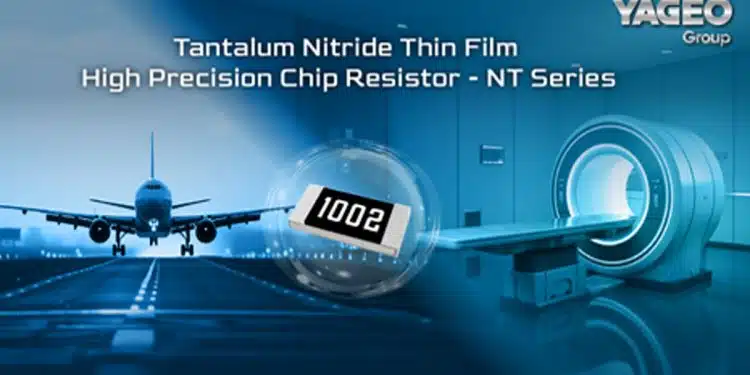YAGEO Group, the global leading passive component provider, recently launched Tantalum Nitride high precision thin film chip resistor – NT Series.
With the features of moisture & sulfur resistant, high precision, high consistency performance, the product offers case sizes from 0402 to 1206, resistance range of 100 Ω – 481K Ω, narrow tolerance of ±0.1%, ±0.25%, ±0.5%, ±1% and low TCR of ±25, ±50 ppm/°C, with power rating of 1/20 W – 2/5 W.
The self-passivation design of the NT series is to form a waterproofing layer.
This layer prevents moisture penetrate from the outside by shielding the resistive layer.
With this structure, it allows the NT Series to maintain high consistency performance in harsh environments, suitable for medical/ aerospace/ telecommunication/ test & measurement field.
Features
- AEC-Q200 qualified
- Superior resistance against sulfur-containing and high moisture environments
- High precision & stability
- Low TCR, low electrical noise
- Temperature Cycling: ΔR/R ±0.1%
- Anti-FOS (105°C, 750 hours): ΔR/R ±2%
- Life/Endurance (70°C): ΔR/R ±0.1%
- Biased Humidity (85°C/85% RH): ΔR/R ±0.1%
Applications
- medical
- aerospace
- telecommunication
- test & measurement
- other industrial harsh environment applications































